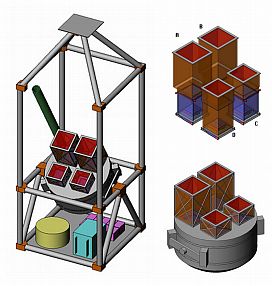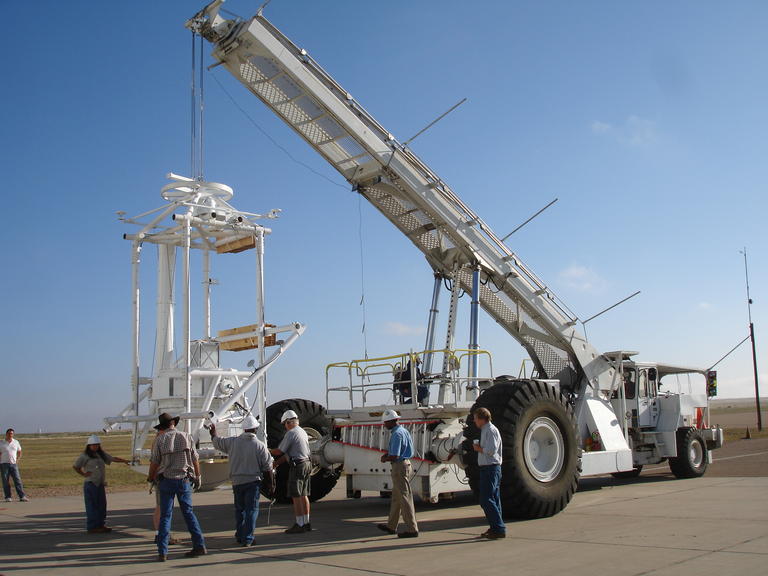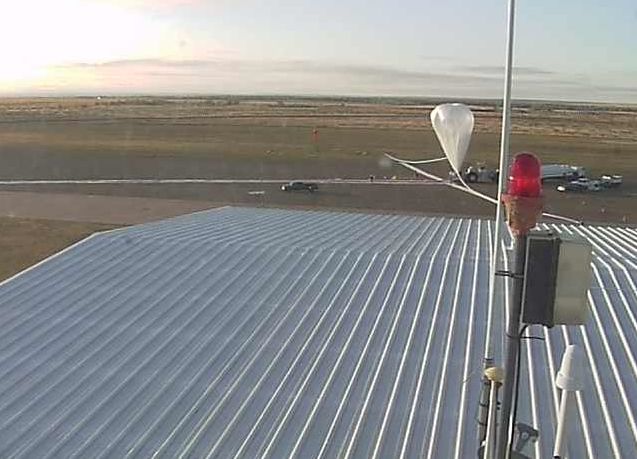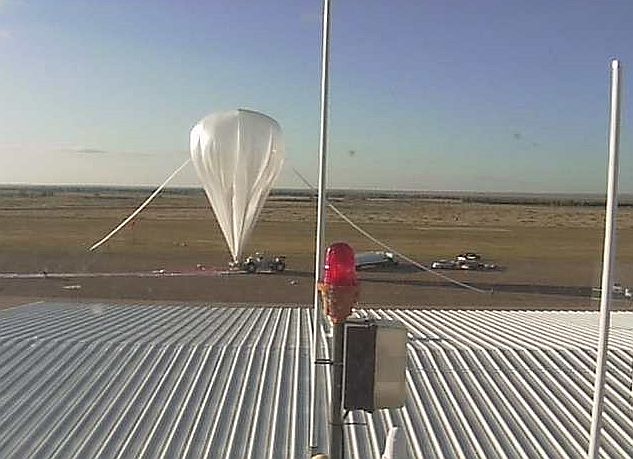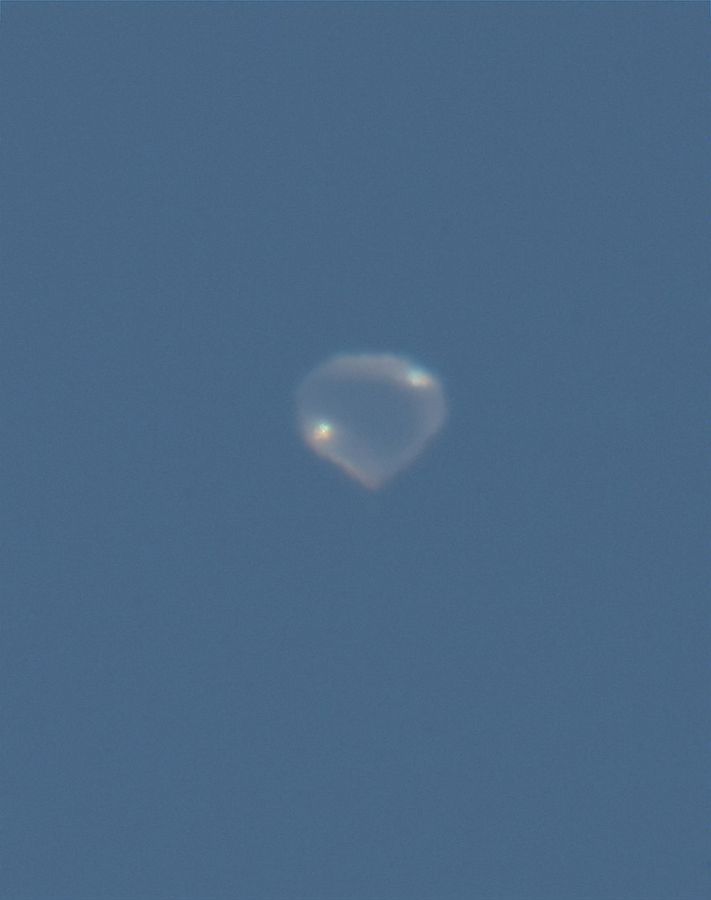Purpose of the flight and payload description
ProtoEXIST is a first-generation balloon-borne wide-field hard X-ray telescope experiment, employing the coded-aperture imaging technique and using Cadmium-Zinc-Telluride (CZT) detectors. It is a technology pathfinder for the High Energy Telescope (HET) in the Energetic X-ray Imaging Survey telescope (EXIST) which is a proposed implementation of the Black Hole Finder Probe under NASA's Beyond Einstein Program. Some of the EXIST goals are to detect and identify highly obscured black holes, red-shifted Gamma-Ray Bursts and other interesting X-ray sources in the sky.
As a technology test bench for HET, the primary goals for ProtoEXIST program are to demonstrate the technology of large area, close-tiled modules of imaging CZT detectors, to determine their background properties in near space environment, to identify the optimal shielding configuration and demonstrate the high performance of scanning coded-aperture telescopes.
The figure on the left show the ProtoEXIST gondola, with four coded-mask telescopes, star camera and support electronics. The telescopes are mounted in an offset elevation pivot that allows direct zenith observation without interference from the balloon rotator or flight train.
All four telescopes point at the same section of the sky and have identical CZT detector planes (16x16 cm2 each, 0.5 cm thick) to simplify the comparison of the performance of the different shielding configurations. Each detector plane is surrounded by shields. In the scheme at left, these are identified by colours. Four telescopes have an identical rear CsI active shield (blue). On regard the sides, there are two types of shielding configurations: two telescopes (A, C) with the combination of CsI active (blue) and Pb-Sn-Cu passive shields (light brown), and the other two (B, D) with Pb-Sn-Cu passive shields only. Also there are two types of Fields of View (FoVs): narrow FoV (A, B) and wide FoV (C, D). This two by two configuration allows a better identification of each internal or difusse background component.
As well known, coded-aperture imaging and hard X-ray spectroscopy require positional sensitive detectors with enough energy resolution. Over the last decade, CZT has become the most promising material for hard X-ray detectors for multiple reasons. Its high atomic number elements efficiently stop X-rays at reasonable thickness. They provide energy resolution substantially superior than conventional scintillators approaching to values generally obtained with Germanium spectrometers. Last but not least, they can be operated at room temperature making them very attractive to avoid the use of complex cooling devices.
To build the coded masks placed in front of the detectors, five layers of Tungsten plates (1 mm thick each) are laminated while the mask pattern is generated by a laser etching technique. The use of the same mask pixel size provide similar positional resolution for all four telescopes allowing easy comparison of imaging performance among different configurations.
The pressure vessel is a 1.2m diameter, 50 cm tall cylinder. To allow a such reduced size was necessary to mount the masks and the upper portion of the passive side shields on top of it, over four X-ray entrance windows. The cylinder also houses four electronic boxes, the flight computer module, the shield electronics module, the calibration source electronics box and the batteries.
Details of the balloon flight
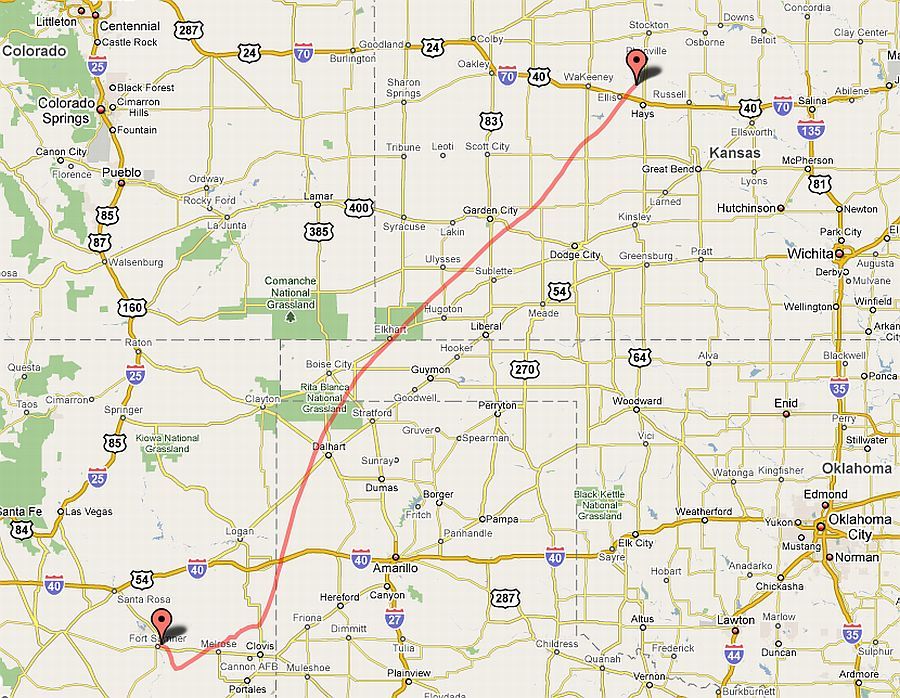
Balloon launched on: 10/9/2009 at 14:40 utc
Launch site: Scientific Flight Balloon Facility, Fort Sumner, (NM), US
Balloon launched by: Columbia Scientific Balloon Facility (CSBF)
Balloon manufacturer/size/composition: Zero Pressure Balloon
Flight identification number: 602N
End of flight (L for landing time, W for last contact, otherwise termination time): 10/10/2009 at 23:35 utc
Balloon flight duration (F: time at float only, otherwise total flight time in d:days / h:hours or m:minutes - ): ~ 10 h
Landing site: 36.5 nautic miles NE of Hays, Kansas, US
After four cancelled attempts due to weather conditions and one ground abort by a failure in a inflation tube, the balloon was launched by dynamic method with assistance of launch vehicle (Big Bill) on October 9 at 14:45 utc. After a nominal ascent phase, the balloon reached float altitude of 130.000 feet at 17:00 utc and started a Northeast flight path, crossing Texas, Oklahoma and drifting as far as Kansas. At right can be seen the complete trajectory of the mission (click to enlarge).
The flight was terminated from the chase plane at 23:35 utc using standard visual parachute separation procedures. The payload landed in a corn field located 36.5 nautic miles NE of the town of Hays in Kansas from where was recovered the next day.
Total flight time was 9 hours and 40 minutes.
The overall performance of the X-ray telescope including the CZT detectors was excellent. The scientific team accomplished all three main objectives, which were 1) to measure detector background rates and overall performance in near-space conditions; 2) to verify thermal, power, and overall detector functions, and 3) to obtain a first light image on a bright (> 100 mCrab) source. Background rates were stable over the flight. High-Z cosmic rays and subsequent charge-saturation did not upset the detector or FPGAs or computer systems.
During the short flight, the only available celestial source brighter than ~100 mCrab (detectable by the 256 cm2 wide-field detector in ~1 hour) was Cyg X-1 at the very end of the flight. About an hour observation of the source with stable pointing only for the final 10 min produced the detection at ~6.5º off the center of the field of view. The offset was due to a failure of the Differential Global Positional System (DGPS) system which required use of the uncalibrated onboard magnetometer for target acquisition.
External references
- Proto EXIST Home Page at Harvard-Smithsonian Center for Astrophysics website
- Building large area CZT imaging detectors for a wide-field hard X-ray telescope ProtoEXIST1 Nucl.Instrum.Meth.A605:364-373,2009
- Flight Performance of an advanced CZT Imaging Detector in a Balloon-borne Wide-Field Hard X-ray Telescope - ProtoEXIST1 accepted for publication in Nuclear Inst. and Methods in Physics Research, A
- ProtoEXIST: Advanced Prototype CZT Coded Aperture Telescopes for EXIST Proc. SPIE Vol. 7732 2010
- The Proposed High Energy Telescope (HET) for EXIST SPIE Conference Astronomical Telescopes and Instrumentation 2010
- Wide Field Hard X-ray Survey Telescope: ProtoEXIST1 Proc. SPIE, vol 6706, 67060B, 2007
4047If you consider this website interesting or useful, you can help me to keep it up and running with a small donation to cover the operational costs. Just the equivalent of the price of a cup of coffee helps a lot.

